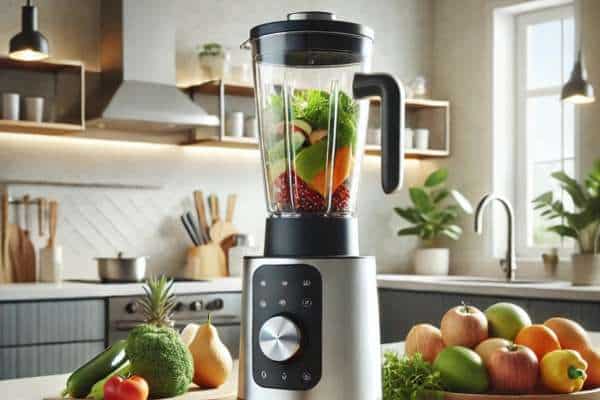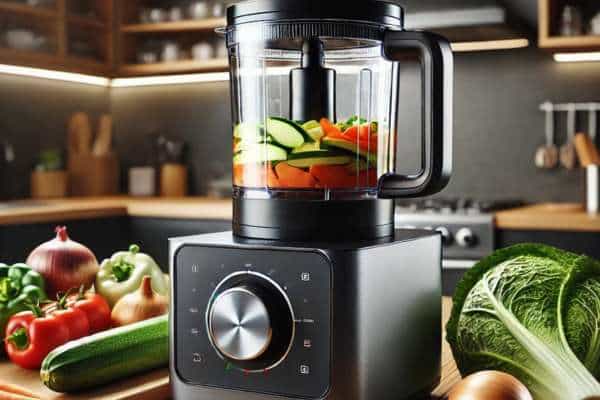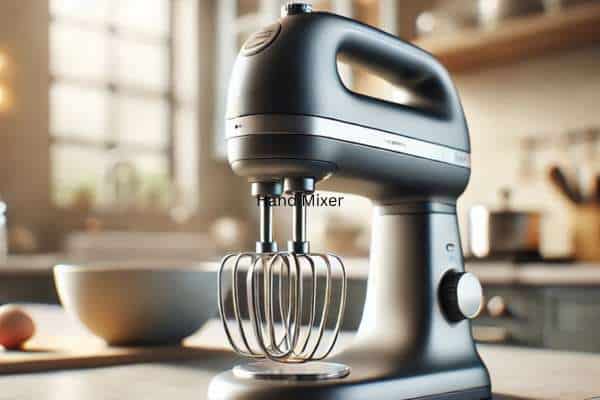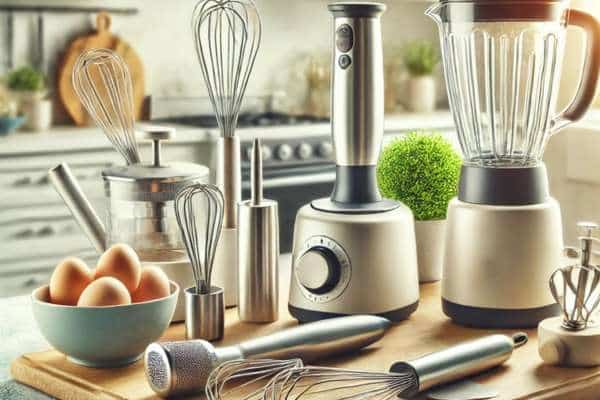Sometimes, you find yourself in the kitchen, ready to whip up a creamy soup or silky sauce, only to realize your immersion blender is missing in action. Don’t worry! There are plenty of alternatives that can get the job done just as effectively. What Can I Use Instead Of An Immersion Blender? From everyday appliances like blenders and food processors to simple manual tools, this guide will explore practical substitutes to achieve perfectly blended results without missing a beat.
Understanding the Role of an Immersion Blender
An immersion blender is a compact handheld device designed to blend ingredients directly in the container, eliminating the need for additional pots or bowls. Its primary uses range from whipping up velvety soups to crafting creamy sauces or blending baby food. Unlike traditional blenders, immersion blenders are prized for their convenience and ease of cleaning. However, their streamlined design can limit functionality for tasks requiring greater power or larger capacities.
Top Alternatives to an Immersion Blender
1. Stand Blender

A stand blender is one of the most effective substitutes for an immersion blender. With its powerful motor and durable blades, it excels at blending soups, smoothies, and purees to a fine consistency. To use it effectively, transfer the ingredients to the blender jar and process in small batches to avoid overflows. While it guarantees smooth results, its bulky nature and additional cleaning requirements can be drawbacks.
2. Food Processor

Food processors are excellent for handling thick, dense mixtures like hummus, pesto, or nut butters. Their sharp blades and wide base ensure even processing, though they are less suited for liquids. Scraping down the sides of the bowl regularly can improve the final texture. Although versatile, food processors may lack the finesse needed for silky soups or light emulsifications.
3. Hand Mixer

Hand mixers, traditionally used for baking, can whip and mix lighter blends. This tool works best for tasks like whipping cream, mixing batters, or creating fluffy meringues. While it lacks the power to puree or handle dense mixtures, its adjustable speeds and ease of use make it a handy alternative for simpler recipes.
4. Potato Masher
The potato masher is a classic manual tool that delivers rustic textures. It’s perfect for chunkier results, such as mashed potatoes, hearty soups, or vegetable mashes. While it requires a bit of elbow grease, it’s an ideal choice for those who prefer a more hands-on approach to blending.
5. Whisk
A whisk might be simple, but it’s incredibly effective for light tasks like emulsifying vinaigrettes or beating eggs. It’s a go-to tool for small-scale blending, particularly when you need precise control. While it won’t work for dense mixtures or large quantities, it’s invaluable for recipes that require a touch of finesse.
6. Fork or Spoon
Sometimes, simplicity is key. A sturdy fork or spoon can tackle basic mashing or blending tasks in a pinch. These tools are best suited for rough textures or small portions, making them perfect for quick fixes. However, they demand more manual effort and might not achieve consistent results.
7. Mason Jar Shaking Method
For small-scale tasks like blending salad dressings or making whipped cream, the mason jar method is both innovative and effective. Simply add your ingredients, seal the jar tightly, and shake vigorously until the desired consistency is achieved. While this method relies on physical effort, it’s a fun and resourceful alternative that eliminates the need for extra equipment.
IV. Factors to Consider When Choosing an Alternative
When deciding on a substitute, assess your recipe’s needs. For soups and sauces, smoothness may be critical, while chunkier textures work for certain dishes. Consider portion size and the tools available in your kitchen. Time and effort are also essential factors, especially if you’re opting for manual methods over electric ones. Choose the tool that aligns best with your desired outcome and energy levels.
Pro Tips for Successful Blending Without an Immersion Blender
- Small Batches Work Best: Overfilling tools can lead to spillage and uneven results.
- Strain for Smoothness: Use a fine sieve or strainer to achieve silky textures.
- Warm Ingredients: Softer, warm ingredients blend more easily, particularly when using manual tools.
Common Mistakes to Avoid
Avoid common pitfalls that can derail your blending process. Overfilling a blender or food processor often results in spills or uneven textures. Using the wrong tool for a specific task can waste time and ingredients. Finally, when working with hot liquids, always ensure lids are secure to prevent dangerous splashes or burns.
Conclusion
Even without an immersion blender, your kitchen is brimming with tools ready to step in. From stand blenders to mason jars, each alternative brings unique advantages to the table. Experiment with different tools, and you may discover a new favorite method for blending and pureeing. Share your blending success stories or innovative hacks in the comments below your culinary creativity might inspire others!
